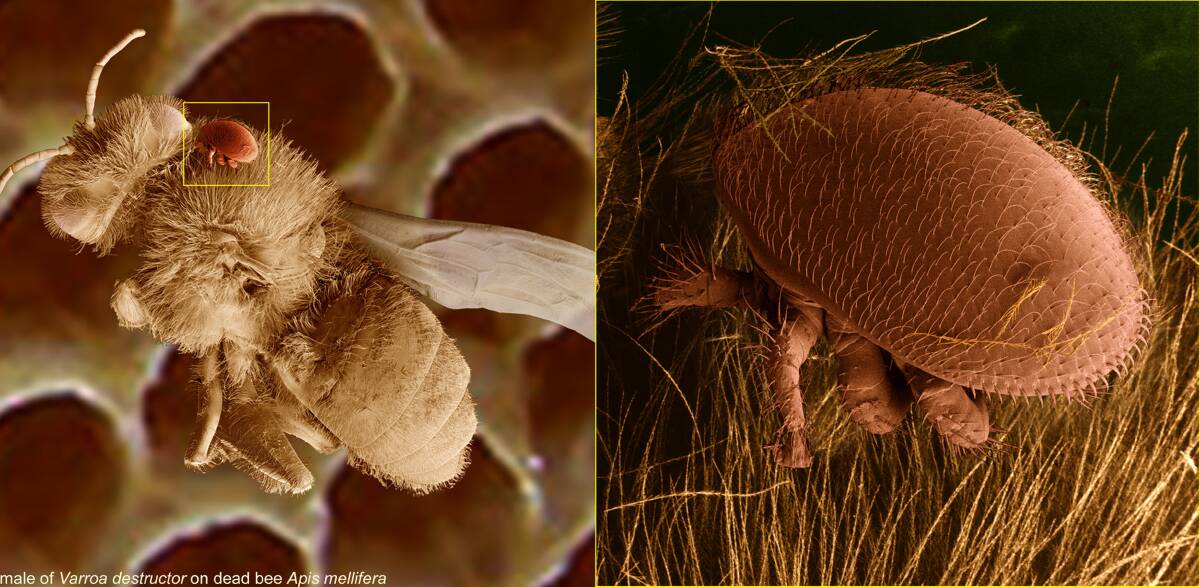
Lake Macquarie beekeeper Roger Easton has disputed a claim by NSW Agriculture Minister Dugald Saunders that the expansion of a biosecurity zone for the varroa destructor mite is "no cause for alarm".
It comes as the NSW government revealed it is killing bees with gas and petrol and plans to release chemicals to kill wild bees.
The NSW government established a second biosecurity zone at Bulahdelah on Tuesday night, after the parasite was found in a beehive there.
"I want to be clear that the expansion of the biosecurity zones is no cause for alarm, but actually shows the surveillance system is doing its job to stay on top of where this parasite is hiding," Mr Saunders said.
The Newcastle Herald reported on Tuesday that Plant Health Australia biosecurity research said the "varroa mite has never been eradicated from a country before".
Mr Easton, who runs Highland Honey at Fennell Bay, said there is cause for alarm.
"The big problem is there are lots of big feral bee hives out there and nobody knows where they are and how many there are. It'll be extremely difficult to even track down these wild bees," Mr Easton said.
"It's like trying to put a lasso around a puff of smoke."
Mr Saunders said the government was looking at "a release of chemical in certain parts of those eradication zones, which will help nullify some of the feral populations that we know exist, where hives may have been let go and just dumped".
"We now have swarms of European bees that have turned up in tree hollows. We also consider that as a real risk. We're looking at a baiting system to help spread that chemical in amongst the feral bee population to bring that somewhat under control as well."
The NSW Department of Primary Industries said bees in the eradication zone must be euthanised and hives destroyed by its staff only. Mr Saunders said bees were euthanised by being "gassed, or more commonly petrol is poured into the hives". He said hives can contain 10,000 to 30,000 bees.
The department said 480 beekeepers were in the original 10-kilometre eradication zone established around the Port of Newcastle, as part of a six-month emergency biosecurity order. A department spokesperson said there were now 731 registered hives in the eradication zone, lifting its initial figure of "more than 300".
However, some beekeepers believe hives within the zone could be in the thousands, raising questions about the capability of the eradication effort.
The department spokesperson said some beekeepers in the zone "may have hives at other sites".
The department also said on Wednesday that 600 hives had been destroyed so far and eight properties infected with varroa in NSW.
This followed Mr Saunders announcing on Tuesday that the mite had been discovered in hives in Newcastle, Seaham and Bulahdelah.
Mr Easton called for beekeepers to be compensated for destroyed hives. He believes the government will pay compensation, but fears it will be "nowhere near what the hives are worth".







